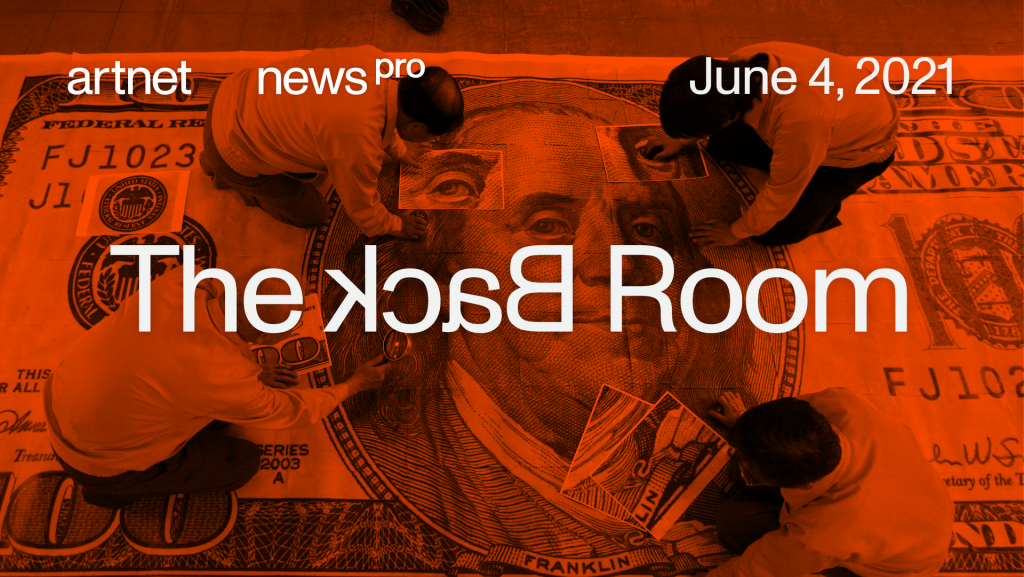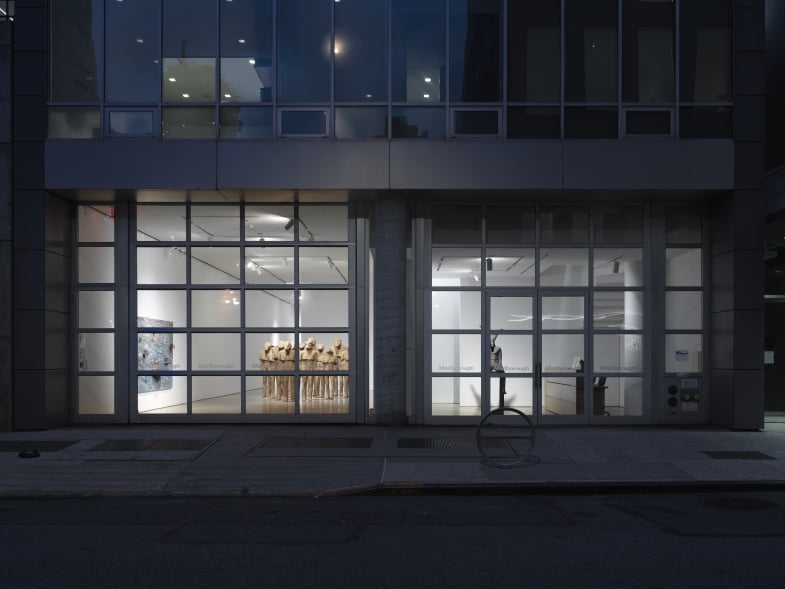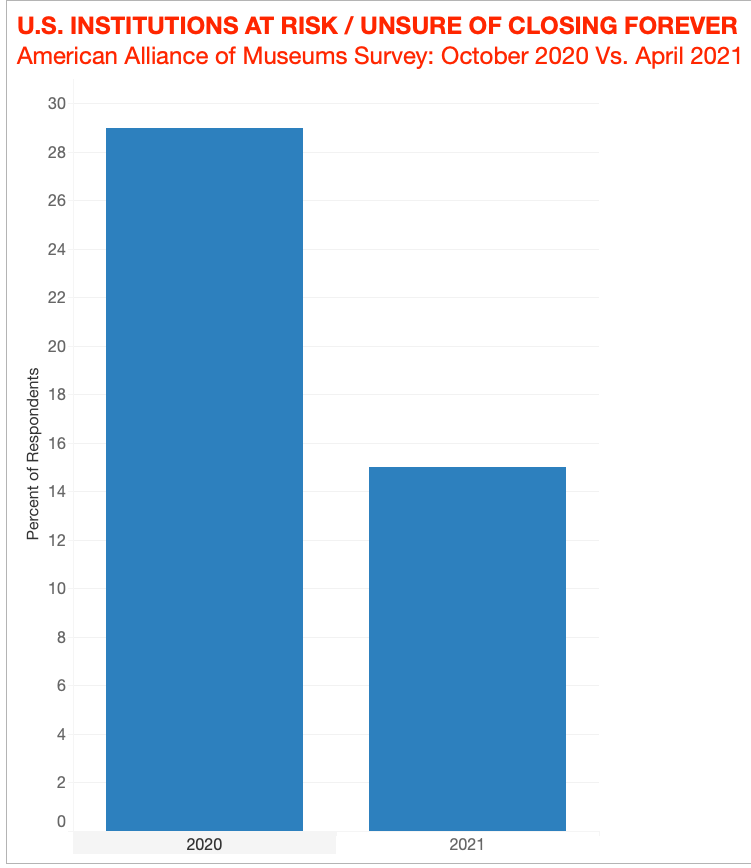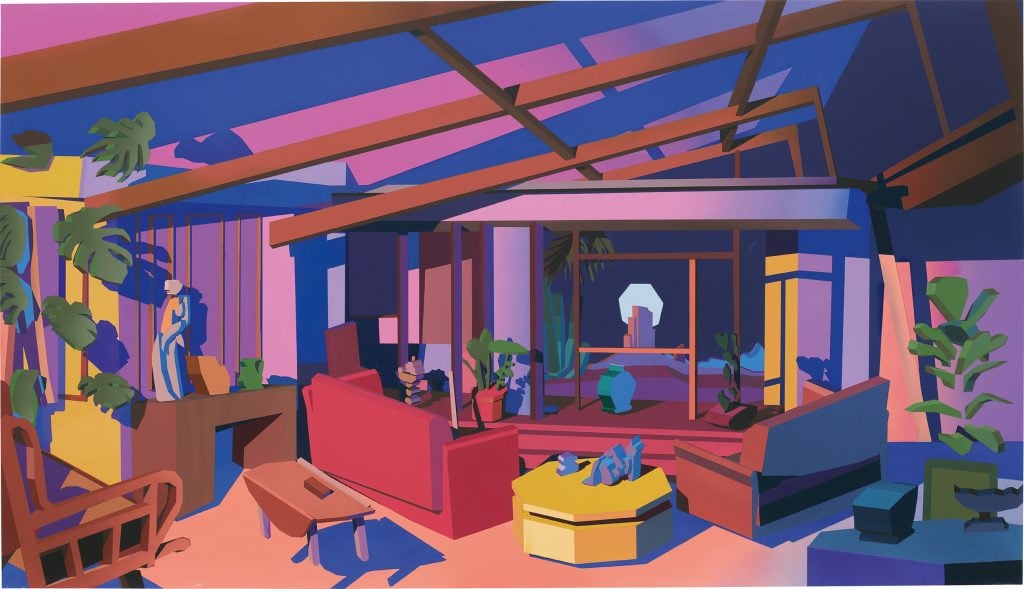The Back Room
The Back Room: Counting Galleries’ Money
This week in the Back Room: Dealer salaries, surveyed; Marlborough Gallery, resurrected; U.S. museums, stabilized(?); and much more.

This week in the Back Room: Dealer salaries, surveyed; Marlborough Gallery, resurrected; U.S. museums, stabilized(?); and much more.

Tim Schneider

Every Friday, Artnet News Pro members get exclusive access to the Back Room, our lively recap funneling only the week’s must-know intel into a nimble read you’ll actually enjoy.
This week in the Back Room: Dealer salaries, surveyed; Marlborough Gallery, resurrected; U.S. museums, stabilized(?); and much more—all in an 8-minute read (2,135 words).
_______________________________________________________________________
Installation view of Aicon Art Gallery at Art Dubai 2021. Courtesy of Art Dubai.
Ever read an art-fair sales report and thought: “OK, but… how much do dealers and their staff actually earn from all these supposed sales?” Well, we now have some answers.
Last month, Artnet News surveyed more than 300 gallerists in 28 countries about take-home pay and other seldom-discussed operational matters—and the results show much of the glitz and glamour of art dealing is sparked by costume jewelry.
Below, I’ve filtered the full report from Zachary Small and Eileen Kinsella into three takeaways backed by a few key data points. If you can’t get to the full report, this will help you fake it for the cameras and the crowds (which is what the gallery biz is usually about anyway, it turns out).
Sound illogical? Well, consider these figures…
Now compare those two data points to these two:
Why the disparity? Most dealers, particularly sole proprietors, usually reinvest their profits into the company, “with the bare minimum going toward living expenses.” Many bankroll their operation by loading up credit card debt, paying it down in good times, and then repeating the process.
Geography plays a major role in earnings, too. In New York, the median salary for execs at high-level galleries is $140,000… but that figure plummets nearly 70 percent outside of Hong Kong, Los Angeles, and London. Regional dealers also generally earn a median salary of just $50,000.
These east coast stats broadly align with a recent, smaller study of about 170 L.A. arts workers of all types, whose average salary collectively landed south of $37,000—roughly $3,000 below the living wage in Los Angeles County.
Benefits are in short supply for all respondents, even among directors and other high-level gallery personnel. Maternity leave was the most prevalent benefit, with 37 percent of respondents saying their employer provides it. Other benefits were even rarer, including bonuses (offered to 30 percent of respondents), family leave (26 percent), and overtime pay (13 percent).
These figures broadly map onto racial demographics elsewhere in the field, such as in the Art Dealers Association of America, which counts only three Black-owned galleries among its 180 members.
While there was not enough data among survey respondents to draw sound conclusions about wage equity among races, a substantial discrepancy emerged between genders.
__________________________________________________________________________________
Contrary to how they are frequently caricatured, the average art dealer is either in the game for love, not money… or really needs to reevaluate. The financial gauntlet is even more merciless for gallery support staff, particularly at the entry level, and especially among personnel who identify as anything other than a white man.
Still, in an era where equity and sustainability have rushed to the foreground, this data can be an important building block to a better future for art dealing. It will just require more transparency, more commitment, and more progressive attitudes to prevail.
__________________________________________________________________________________

The gallery storefront in New York. Courtesy of Marlborough Gallery.
Against all odds, Marlborough Gallery is storming back from the (near) dead. But as any reader of myths, religious texts, or undead romances would expect, it’s not returning from the other side unchanged.
Katya Kazakina’s story on the gallery’s resurgence is full of twists, turns, and wild details (the phrase “10 truckloads of garbage” appears, and not as a metaphor). But I’ll summarize Marlborough’s transformation by focusing on three pivot points.
Douglas Walla, a 70-year-old artist-turned-dealer who worked for Marlborough from 1978 to 1985, was named C.E.O. last July—shortly after the board fired president Max Levai and accepted the subsequent resignation of his father, Pierre Levai.
Marlborough’s West 25th Street gallery is now the hub of the operation—a plan initiated by Max Levai but dramatically altered after his ouster.
The cooler, younger set of artists and buyers who gravitated to Marlborough under Levai and former V.P. Pascal Spengemann would no doubt hit the gallery’s revamped roster with a hearty “OK Boomer”—but based on early returns, Walla and his staff are more than fine with that.
Walla said Marlborough’s exhibition schedule is booked through 2022.
All told, no one knows the gallery’s next phase better than its C.E.O.:
“I needed some lead time to reformulate the legacy of Marlborough as I had experienced it under my early years… I think the formula is ‘looking forward, looking back.’” —Douglas Walla.
__________________________________________________________________________________

© Artnet News 2021, from data by the American Alliance of Museums.
In the third survey-based snapshot of its member institutions produced since the March 2020 shutdown, the American Alliance of Museums found that 15 percent of respondents in late April felt they were either at “significant risk of permanent closure” within one year or were unsure. In late October 2020, a distressing 29 percent of respondents fell into one of those two categories.
So is this good news or bad news? Mostly, it’s a textbook example of anchoring bias, the tendency for our feelings about new info to be warped by the first data point we get about a topic.
Case in point: In comparison to 29 percent of AAM respondents actively pondering the reaper’s arrival last fall, “only” 15 percent seems pretty good! In comparison to the (likely) negligible percentage that would have said they might perish pre-shutdown, 15 percent seems pretty bad!
What’s clear, however, is that the situation for U.S. institutions has improved dramatically in six months. Here’s hoping when the next survey comes back to the AAM, we’ve seen an even steeper decline in existential fear.
Click through below for Taylor Dafoe’s full summary (or jump straight to the actual study here).
__________________________________________________________________________________
“It was nasty as a mofo.”
—Linda Goode Bryant (whose work appears in Antwaun Sargent’s upcoming “Social Works” exhibition at Gagosian) on landlords and real-estate agents’ reactions when she inquired about renting space to start Just Above Midtown, Manhattan’s first gallery focused on Black artists, in the early ‘70s.
__________________________________________________________________________________
In today’s Wet Paint, Nate outlines how Leon Black’s alleged overtures about launching a gallery factor into the sexual assault lawsuit levied against him by former model Guzel Ganieva. (Artnet News Pro)
Also included in the art world’s greatest gossip column…
The first five galas returning IRL, starting with the Amfar Gala Cannes on July 16.
Larry Gagosian has acquired two Issy Wood paintings and is hot after more.
Matthew Wong’s first major solo museum show opens at the Art Gallery of Ontario in August.
PPOW will pop up in Provincetown with a David Wojnarowicz show opening June 25.
__________________________________________________________________________________
Art Basel confirmed to VIPs that its flagship fair is on from September 20 to September 26 for visitors with proof of vax, a recent negative test, or proof of “sufficient antibodies”; capacity will be capped 20 percent lower than normal, with an extra VIP day added to offset the restriction. (The Magic of Twitter)
__________________________________________________________________________________
Sotheby’s plans to establish a showroom in Cologne, and will keep its seat in Germany warm in the interim by hosting online sales of lots sourced from in and around the country. (Artnet News Pro)
__________________________________________________________________________________
Bonhams hired ex-Christie’s specialist Marcello Kwan to lead its Modern and contemporary art unit in Asia; Tang Contemporary Art and Christie’s vet Cindy Lim will come aboard as senior specialist and head of sales in Hong Kong. (ARTnews)
__________________________________________________________________________________
Sunjung Kim will not return as president of South Korea’s Gwangju Biennale Foundation when her contract expires at the end of the month due in part to a clash with the event’s labor union. (Art Asia Pacific)
__________________________________________________________________________________

Jonathan Chapline, Untitled (2019). Courtesy of Phillips.
__________________________________________________________________________________
Date: 2019
Seller: Private Collection
Price: $51,300–76,900 (HK$400,000–600,000)
Selling At: Phillips Hong Kong’s 20th Century Art & Design Day Sale in Association With Poly Auction
Sale Date: Monday, June 7
__________________________________________________________________________________
In May 2020, Chapline’s paintings were selling on the primary market for under $15,000, and his name had never been searched in the Artnet Price Database. But last December, one of his pieces sold for a record $243,861 (HK$1.9 million)—more than four times its high estimate—at Phillips in association with Poly Auction. He was also one of the fastest-rising artists in the Artnet PDB this spring, racking up nearly 50 searches across April and May. Soon we’ll see if Model Home (the larger of two Chapline works up for bidding in this auction) just looks like a scene from a video game, or if bidders will once again compete like they’re playing each other in one.
__________________________________________________________________________________